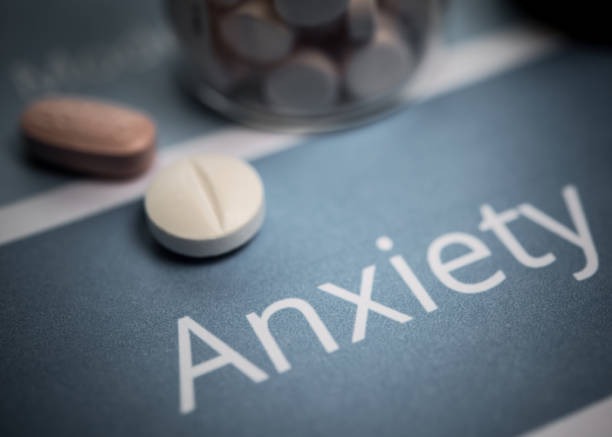Anxiety isn’t just about feeling nervous before a big meeting or exam—it’s a persistent, overwhelming fear or worry that can take over every area of life. According to the National Institute of Mental Health, over 40 million adults in the U.S. experience anxiety disorders each year. That’s roughly 1 in 5 people. The good news? Anxiety is highly treatable.
In this blog, we’ll explore how modern anxiety treatment options are helping people reclaim their lives, why a personalized approach is crucial, and what to look for when seeking support.
What Is Anxiety?
Anxiety is a natural part of the body’s stress response. However, when it becomes chronic or disproportionate to the situation at hand, it may signal an anxiety disorder. These conditions vary in intensity and type, but all interfere with daily life, relationships, and well-being.
Types of Anxiety Disorders:
- Generalized Anxiety Disorder (GAD): Constant worry about everyday matters.
- Panic Disorder: Sudden episodes of intense fear or terror.
- Social Anxiety Disorder: Extreme fear of judgment or embarrassment in social settings.
- Phobias: Intense fear of specific objects or situations.
- Obsessive-Compulsive Disorder (OCD) and Post-Traumatic Stress Disorder (PTSD) are sometimes linked to anxiety due to overlapping symptoms.
Causes and Risk Factors
Anxiety doesn’t appear in a vacuum. It’s often the result of a complex interplay between genetics, environment, and personal history.
Common Contributing Factors:
- Family history of anxiety or mental health disorders
- Childhood trauma or abuse
- Chronic illness or pain
- Substance abuse or withdrawal
- Stress from work, relationships, or finances
Understanding the root causes is essential for long-term success with anxiety treatment.
Signs You May Need Professional Help
It’s normal to feel anxious occasionally. But if anxiety is preventing you from functioning day-to-day or causing significant emotional distress, it’s time to consider professional support.
Warning Signs:
- Racing thoughts or constant worry
- Avoiding social situations
- Panic attacks
- Difficulty sleeping
- Muscle tension or unexplained aches
- Fatigue or lack of focus
If any of these resonate, don’t ignore them—anxiety treatment can help you reclaim control over your life.
Anxiety Treatment Options: Evidence-Based Approaches
The most effective anxiety treatment plans are personalized and evidence-based. Here’s a breakdown of proven approaches:
1. Cognitive Behavioral Therapy (CBT)
CBT is widely regarded as the gold standard in anxiety treatment. It helps individuals identify and reframe negative thought patterns that fuel anxiety.
Key Benefits:
- Builds long-term coping mechanisms
- Reduces symptoms through practical exercises
- Effective for both generalized and specific forms of anxiety
2. Exposure Therapy
Primarily used for phobias and social anxiety, this method gradually exposes patients to feared objects or situations, helping desensitize and rewire fear responses.
3. Medication-Assisted Treatment
Antidepressants (like SSRIs) or anti-anxiety medications (like benzodiazepines) can help manage symptoms, especially during acute episodes. However, they are most effective when combined with therapy.
4. Mindfulness and Meditation
Mindfulness-Based Stress Reduction (MBSR) and other meditation practices have been proven to reduce anxiety symptoms by calming the nervous system and improving emotional regulation.
5. Lifestyle Modifications
- Regular physical activity
- Reducing caffeine and alcohol
- Establishing a healthy sleep routine
- Building strong social support networks
These everyday habits amplify the effectiveness of clinical treatment.
Why Personalized Anxiety Treatment Matters?
Everyone’s anxiety journey is unique. Factors like past trauma, current stressors, or co-occurring disorders (e.g., depression or substance use) can impact treatment needs. That’s why treatment centers like Treat Mental Health focus on customized care plans tailored to the individual.
Benefits of Personalized Treatment:
- Better engagement with therapy
- Faster and more sustainable progress
- Lower relapse rates
- Greater client satisfaction and well-being
Inpatient vs. Outpatient Anxiety Treatment
Depending on severity, some people benefit from more intensive care settings.
Inpatient (Residential) Programs:
- 24/7 support and structure
- Ideal for those with severe anxiety or co-occurring issues
- Integrated therapies and community support
Outpatient Programs:
- More flexible, ideal for mild to moderate anxiety
- Allows individuals to continue work, school, or caregiving
- Weekly sessions with therapists and support groups
Holistic and Integrative Therapies
In recent years, more programs have begun integrating holistic approaches into traditional therapy.
Popular Complementary Treatments:
- Yoga and breathwork
- Art or music therapy
- Nutritional counseling
- Equine-assisted therapy
These approaches help support mental, emotional, and physical wellness—an essential trio for full recovery.
The Role of Support Systems in Anxiety Recovery
Recovery isn’t a solo mission. Friends, family, and trained professionals play an important role in reducing shame, offering encouragement, and keeping individuals grounded in reality when anxiety feels overwhelming.
How Loved Ones Can Help:
- Listen without judgment
- Learn about the person’s anxiety triggers
- Offer to attend therapy sessions or doctor visits
- Encourage healthy routines and self-care
What to Look for in an Anxiety Treatment Center?
Choosing the right provider can make all the difference. When researching options, look for:
- Accreditation: Licensed and certified staff with a proven clinical record
- Comprehensive evaluation: Assessment of mental, emotional, and physical health
- Multidisciplinary care team: Therapists, doctors, counselors, and wellness specialists
- Aftercare planning: Strategies and support systems to maintain progress
Centers like Treat Mental Health provide a full continuum of care, ensuring clients receive the right treatment at every stage of their journey.
Long-Term Outlook: Living Beyond Anxiety
Recovery from anxiety isn’t always a straight line, but with the right treatment and consistent effort, it is entirely possible to lead a fulfilling, joyful life. Whether your anxiety stems from childhood trauma or modern-day burnout, healing is within reach.
Steps Toward Continued Wellness:
- Stick to your treatment plan
- Monitor stress levels regularly
- Stay connected with support networks
- Celebrate small victories
- Be kind and patient with yourself
Final Thoughts!!
Anxiety may be common, but it doesn’t have to control your life. With evidence-based strategies, compassionate care, and the right support system, you can move from survival to thriving. The first step? Seeking qualified Anxiety Treatment that’s tailored to you.
